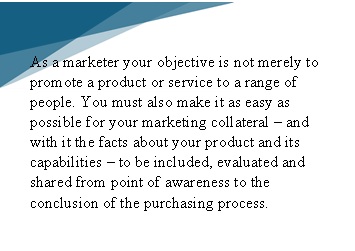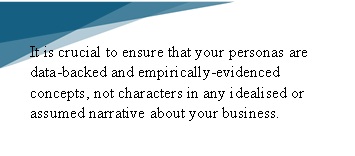
In technical marketing, your audience is more diverse than you think. Picture by Jason Leung via Unsplash.
Introduction
Technical marketing, including B2B marketing, must convert more diverse audiences than many people realise. For example, imagine you are the CEO of a large NHS trust, which needs a SaaS solution to end its HR management woes. You reported a deficit of more than £1,000,000 in the last financial year, so cost effectiveness is a priority: if a digital solution can show ROI very quickly and even allow you to reduce headcount, that is great. You must cover staff working across 5 different sites, a mixture of substantive, agency and bank workers with a range of working patterns. Your IT manager says he used a great solution in his last job. So, obviously, you visit the company’s website and download all of the technical specifications for their product, do you not?
No, of course you do not. The tech specs are useful for the IT person who recommended the product, but mean little to the average NHS CEO. More importantly, they do not answer the CEO’s questions. What the CEO needs is a business-focused product guide or white paper that clearly explains the financial and logistical impact of the proposed solution, the likely CapEx and the timescales involved.
As the CEO you can, if your interest is piqued by the SaaS company’s technical marketing, share the tech specs with IT by sending them the link at the back of that guide. They, in turn, can point board members towards documents regarding risk management and workflow automation. And woe betide any SaaS company that cannot supply all of this, because they are stuck at the awareness stage of the sales funnel and inaction just lost them that sale.
Technical marketing is not limited to one audience
Marketers, especially those working in B2B in technical sectors, have multiple audiences that must be persuaded at various points in the sales process. As we saw in the example above, organisations comprise many people in various roles with diverse interests, concerns and drivers. All of them can influence vendor choice and purchasing decisions. Therefore, would-be vendors have to reach them all. One-size-fits-all content is not just insufficient, it does not really exist: it will always fail to address someone.
A recent report from McKinsey explains how the customer-centric business model is associated with better growth and prospects. Copywriting that reflects a genuine understanding of the customer and the challenges they face is a fine example of this model in action. It is also, quite simply, a recipe for better B2B technical marketing.
As a marketer your objective is not merely to promote a product or service to a range of people. You must also make it as easy as possible for your marketing collateral – and with it the facts about your product and its capabilities – to be included, evaluated and shared from point of awareness to purchase and beyond. That means giving the right type of information in the right way to the right people, and making it easy for them to share that information with others.
This article will give you hints, tips and resources to achieve that.
Identifying target personas
Many technical marketing departments think they understand their customers. However, too often this understanding is only partial, surface-level or outdated. And even where a business does understand its client base pretty well, that knowledge may be siloed, often within the sales team.
The way out of this trap is to build data-backed persona profiles. A persona is a fictionalised character that encapsulates one segment of your target audiences; your audiences comprise your customers and those likely to influence their purchasing decisions. Since you will probably have more than one audience, you will, ideally, generate multiple persona profiles. However, as Neil Patel explains, you begin to defeat the object if you create too many personas; somewhere between 2 and 20 is probably ideal. Much more than that, and you will effectively have defined your customer base as ‘more or less everyone’.
A persona profile sets out the likely preferences, behaviours, concerns and barriers to purchasing for each audience, all in the form of a fictionalised individual. Hubspot has some great examples and further rationale. The usual practice is to create personas for your customers and those influencing them, but you can also create negative personas – fictionalised descriptions of customers you are not chasing, or who are highly unlikely ever to consider your product – which can help to prevent you from wasting effort on marketing that is doomed from the outset.
It is crucial that your personas are data-backed and empirically-evidenced concepts, and not characters in any idealised or assumed narrative about your business. So when you create them, it is imperative that you work from the data up, rather from the character idea down. In other words, however much you think you know your customer, and however clearly you can picture them in your mind, you must gather the evidence (from website use insights, market research, customer feedback, interviews with your sales team, conversations with clients, recent sales data and so forth) and build your personas from this.
If this sounds daunting, or if you are working in a very small team, there are several templates available that can help you to flesh out your target personas. For example, Hotjar offers a free user persona survey.
Copywriting for multiple personas
While customer personas help technical marketing teams to understand consumers, this knowledge alone will not drive sales. To do that, you need to (a) identify each persona’s role in the sales funnel and formal purchasing process and (b) pitch your messaging accordingly.
So, when you plan marketing collateral that targets a given persona, ask yourself: What role does this persona play in the purchasing process?
The answer to this will allow your technical copywriter, designers and marketing staff to (a) address your audiences in ways that resonate with them, increase awareness and spark interest and (b) present them with the understanding and information they need to play their role in the purchasing process.
Tailor your content to the targeted sector and purchasing journey
Your customers probably use a range of purchasing processes. In public sector organisations like the NHS, there may be service-user and public involvement – as well as highly specialised clinical input – in technical procurement. Organisations may have to justify spend in terms of both quantifiable outcome and public service. This means technical marketing materials must address a wide range of audiences with diverse interests in the process and its outcomes. In contrast, private companies of all sizes may rely heavily on their own people to assess potential purchases, with little external input. And of course many businesses, regardless of their structure and status, must ensure that any purchase maintains their compliance with a swathe of industry regulations.
The upshot of this is that all sectors, but perhaps technical sectors in particular, generate marketing personas with diverse interests, concerns and expertise. To market SaaS products you will probably find that those in roles requiring hands-on technical expertise want tech specs and documentation, whereas the CFO needs to understand the likely ROI and downstream revenue gains. In manufacturing, operational managers need to understand how your product will solve their problems. Integration with legacy equipment and systems is frequently important, as are ease of use, ease of implementation and support arrangements. Answering those questions requires a blend of technical specs, product guides and support materials. Meanwhile, the CEO and CFO want to know about CapEx, the speed and extent of ROI and how your product will affect their revenue flow for the next 5 years.
Thus, when marketing to healthcare organisations, you might find yourself having to persuade some of the most respected minds in medicine that they should advocate for your product, while doing exactly the same with service users and community groups. Much the same applies in lots of B2B sales.
Here are just a few examples of how you might tailor marketing materials for different personas and at different points in the sales process:
| Sector | Persona | Point in sales funnel | Material |
| SaaS | Entry-level engineer | Brand awareness | Blog article: ‘Scaling test infrastructure in DevOps’ |
| CFO | Decision to purchase Vendor selection | Case study: ‘How XYZ plc used [product name] to eliminate performance bottlenecks and increase revenue’ Business-focused white paper | |
| Engineers | Product awareness Vendor recommendation | Tech specs Product documentation Interactive demos | |
| Manufacturing | Director of operations | Product awareness Decision to purchase Selection of vendor | Business-focused guide: ‘How to automate workflows, eliminate human error and increase productivity’ Case studies Interactive demos |
| Operations management | Product awareness Recommendation of vendor | Short video: ‘How to tackle common production bottlenecks in [sector name]’ Case studies Process-focused white paper (with key business info e.g. time to ROI and likely productivity gains) | |
| CFO | Decision to purchase Selection of vendor | Business-focused guide: ‘How to automate workflows, eliminate human error and increase productivity’ Case studies White paper: ‘Getting best ROI and revenue enhancement from [product name] Case study/article: ‘How XYZ plc used [product name] to drive growth’ | |
| Health/medical | CEO of hospital trust | Product awareness Choice of vendor Decision to purchase | Business-focused user guide and product documentation White paper: ‘Using [product name] to improve patient outcomes while maximising resource values and ROI’ User testimonials from other health/medical leaders Compliance checklist Case studies: ‘How XYZ trust saved £XYZ and increased patient-facing hours by 28% with [product name]’ |
| Relevant directors, e.g. business development, procurement, medical | Product awareness Decision to purchase Recommendation of vendor Choice of vendor | White paper: ‘The benefits of [product name] for patient experience and outcomes’ Compliance checklist Case studies from patients and health/medical leaders Videos Peer-reviewed journal papers Business- and user-focused guides | |
| Relevant middle managers (i.e., those who will implement and oversee) | Product awareness Recommendation of vendor Choice of vendor Ongoing client relationship management | Tech specs plus details on security, integration with legacy systems. Implementation and trouble-shooting guides Technical product documentation Interactive guides and learning materials Compliance checklist | |
| Clinicians | Product awareness Recommendation of vendor | Peer-reviewed journal papers Tech specs Case studies (patient and medical leaders) Interactive demos |
What NOT to do in tailored copywriting
- DO NOT overload non-techie decision-makers and decision-influencers with technical jargon – use it in your tech specs and techie-facing materials instead.
- DO NOT assume that your first version is your final version: seek feedback from others within your organisation and test your material (e.g., A/B or split testing of emails or landing pages).
- DO NOT be afraid to re-purpose your materials. A detailed tech-focused guide may have an executive summary that is perfect for non-technical readers.
- DO NOT get so excited about your product offering that you forget about context. Healthcare audiences at every level need to knowthat your solution ensures confidentiality and accuracy – it might seem blindingly obvious to you that it does, but non-expert readers will need you to spell it out. The context your readers operate in determines the boxes they have to tick during the purchasing process. If you do not make that easy for them, you are impeding your own sales.
- DO NOT fill material for non-expert audiences with loads of jargon and technical data in the hope that readers will be impressed by your expertise. Even if they are impressed, you will not have achieved your objective, which is to give them an argument for buying your product that they can work into the purchasing process. Keep your messaging as complex or simple as befits the target persona.
So, what should you do instead?
- DO make the most of your data and insights. Talk to your sales team; they will have direct experience of multiple personas and understand what those personas want to know and what they value. When it comes to copywriting, back up your arguments with data and examples. Send first drafts to your product developers as well as your in-house marketing, sales and legal teams. Act on their feedback.
- DO vary your tone, format, perspective and level of detail according to the persona you are addressing.
- DO provide a range of marketing collateral targeting various audiences and differentiate the copywriting of this according to your personas. Thus, tech jargon for engineers and sector-specific jargon for decision-makers; clear explanation of the money-saving aspects of your product for the CFO; reassurance that your product is fit for their context for all personas; clear explanations that clarify all benefits for non-technical stakeholders (e.g. non-execs and service user reps in health and social care).
- DO make it easy for interested parties to find and share your marketing collateral.
- DO consider leading with a widely-accessible document that summarises your offering. Make sure it explains that more detailed/technical/niche-focused information exists and where the reader can find it. Extra points for clickable links, and for email addresses (ideally also named individuals) to contact with further enquiries.
- DO use a range of formats. One white paper or a single video is not going to cut it.
Conclusion
It makes sound business sense to tailor your copy and content for all of the audiences you are marketing to, in ways that appeal to each of them and meet their needs. While addressing multiple personas is unquestionably challenging within technical marketing, it is imperative in a customer-centric marketplace. Targeted communications drive awareness of your brand and build trust. Why not audit a few pieces of your current marketing collateral today and ask yourself, who is the target persona for this and how is it meeting their needs? And if you need any help with your technical copywriting, please get in touch.



Comments are closed